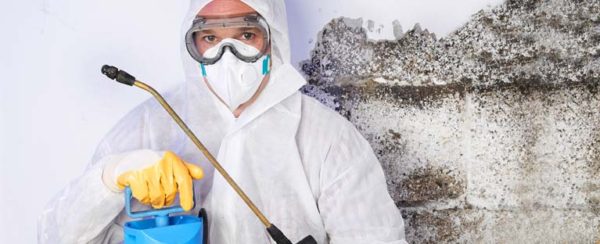
Mold increment in homes is not just an unsightly nuisance but also a wellness risk. Mold thrives in damp, warm environments and can spread rapidly if not self-addressed. While mold removal is an essential first step, preventing future infestations requires homogeneous maintenance. Here’s a steer on how to keep mold after removal, ensuring your home girdle clean, dry, and sound.
1. Control Moisture Levels
Mold's primary trigger off is wet, so dominant humidity and wet is the first line of defence against future increment. Invest in a dehumidifier for areas prone to dampness, such as basements, bathrooms, and wash rooms. Aim to keep interior humidity levels below 60, ideally between 30 and 50. Use moisture meters to ride herd on humidity levels in areas where mold previously thrived.
In addition to using dehumidifiers, it’s essential to address any sources of irrigate escape. Repair leaks in roofs, pipes, and Windows straightaway. Standing irrigate or uniform wet is a breeding run aground for mold spores, so it's remarkable to act fast at the first sign of leaks.
2. Ensure Proper Ventilation
Poor ventilation is a John Major to mold increase, particularly in bathrooms, kitchens, and basements. Ensure that air can freely throughout your home by opening Windows on a regular basis and using tucker out fans in moisture-prone areas. Install or upgrade vents in areas such as the attic and spaces to kick upstairs air front and keep dampness.
When cooking or showering, use beat fans to reduce moisture in the air. In areas without windows, consider instalmen extra fans or air vents. Ensuring that your home is well-ventilated will help keep humidity levels under verify.
3. Maintain Cleanliness
After mold remotion, it’s essential to keep your home strip to keep mold spores from taking root again. Dust and dirt can trap moisture, creating the apotheosis conditions for mold to grow. Regularly clean and wipe down surfaces in areas with high humidness. Use mold-resistant cleanup products and consider products with added mold inhibitors, particularly for areas like the priv and kitchen.
Don’t forget to clean your HVAC system. Air ducts can collect dust and mold spores, which may open throughout your home when the system is track. Regular upkee and cleanup of HVAC filters can keep this from becoming a problem.
4. Address Moisture Problems Promptly
The key to preventing mold is to act quickly at the first sign of moisture problems. If you note on windows, walls, or ceilings, it’s requirement to address it right away. Use a towel or mop to wipe away moisture and check for leaks or any signs of water damage. The Oklahoman you observe and solve the issue, the less there is for mold to return.
Additionally, consider installation water alarms in areas that are unerect to implosion therapy or leaks, such as basements or spaces. These alarms can alert you to moisture problems before they step up into mold increase.
5. Use Mold-Resistant Materials
When repairing or renovating areas that had mold remediation in Boise , consider using mold-resistant materials. Mold-resistant wallboard, paints, and sealants can tighten the likelihood of mold regrowth, especially in moisture-prone areas like bathrooms and basements. These materials are studied to fend water absorption and prevent mold increase, providing an extra stratum of protection for your home.
6. Regular Inspections
Routine inspections are critical to maintaining a mold-free environment. Check areas that are prostrate to wet, such as basements, spaces, attics, and under sinks, for early signs of mold or irrigate . If you spot any issues, take care of them rapidly to keep further or mold growth.
Conclusion
Mold removal is only part of the battle. Preventing mold from reverting requires vigilance, sustenance, and quickly action when moisture issues come up. By controlling humidness, ensuring specific ventilation, maintaining , and addressing moisture problems right away, you can protect your home from the dangers of mold growth and ascertain a healthier sustenance . Regular inspections and the use of mold-resistant materials will also supply long-term protection. With these tips, you can significantly tighten the chances of mold qualification a replication in your home.

